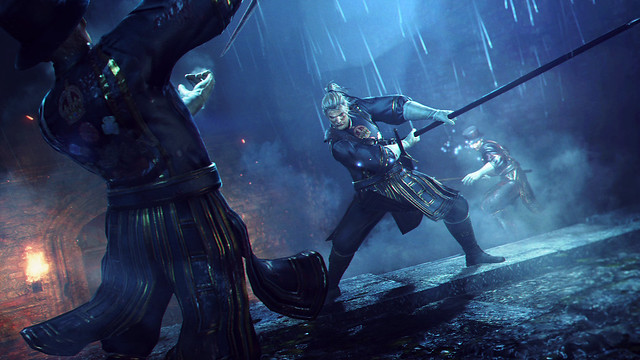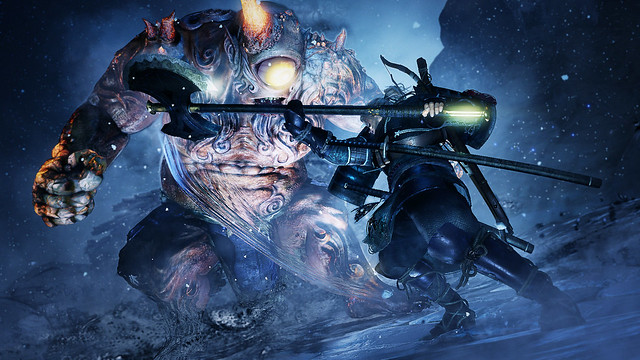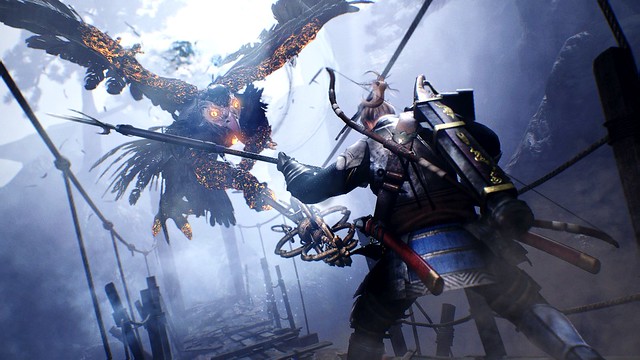
Today at Game Developers Conference, I gave a presentation discussing the challenges and lessons learned in reintroducing a classic samurai genre to a modern action audience. In my opinion, this would be a tough proposition for any developer.
Target and Approach
Team Ninja was chosen to take over development of Nioh in 2011. By 2014, we had decided to take Nioh in a direction that was different from the original plan and we therefore restarted development.
The first thing I did was to redefine the target audience and a new approach for Nioh. I felt that Team Ninja should not attempt to make a user-friendly action game targeting a wide consumer base, but take an approach that played to the strengths of Team Ninja and develop a quality action game with intense difficulty and challenge, targeting hardcore gamers.
In Nioh, the main protagonist is a sword-wielding samurai, a character and a genre which we know a thing or two about. But our newfound conviction to this approach was not suddenly born from our arrogance or recent achievements.
Rather, the experience of our past failures was the guiding force behind this position. You see, I was the also the director in charge of Ninja Gaiden 3 and Yaiba: Ninja Gaiden Z, two projects where I learned very difficult and valuable lessons.
And based on those experiences, I reminded myself from the beginning of Nioh’s development that I should never compromise our core audience and the integrity of our work.
The Demo Process
Developers have to continuously juggle a lot of elements under various constraints, such as budgets, technical issues, and so forth. I think that all developers get to a point where they feel anxious about whether their concepts and direction meet players’ expectations.
So, we decided to reshape the development process by communicating directly with our target audience through game demos. The demos were released several times in the mid-to-late term development where feedback could be utilized; they became a development tool to validate our approach, rather than a promotional tactic for the marketing campaigns.
One thing we learned through this process was the difference between play styles in the East versus the West. Many players in the West were quite positive about the demo, but that was not the case in Japan and Asia.
We realized that this disparity was caused by the cultural differences in how people perceive difficulty and the contrasting ways players navigated through the alpha and beta demos. Interestingly, there were some common opinions — a lack of tutorial elements and desire to improve user performance — that were echoed in both regions.
The realism and authenticity of the samurai armor, as well as the environment design, were overwhelmingly well received in the West. I suppose this is because people here view this world as an exotic setting.
Our Experience with the Demo Process
Gathering information about the players’ experience was not an easy task, since the players who provided their opinions and filled out the official questionnaire were inevitably few in number.
So we also had to obtain information proactively. Through social sites and bulletin boards, we were able to discover positive and negative feedback, which was very useful due to the candid nature of peoples’ opinions in a very “colorful” manner.
The first problem we encountered after researching feedback was that many members of our team became too influenced and affected by the opinions of the players. Some of the team wanted to make the changes in certain ways because players said they wanted it.
For example, there were a measurable amount of opinions asking us to remove the Ki Pulse system. It was ultimately rejected, because we wanted to design tactical battles as a samurai and how players can negotiate their constraints in this game.
Another popular opinion was to create an open-world system. This was also rejected, as we wanted to shorten the load time after death, as well as raise the frequency and density of the battles (it also would have cost a lot of money).
On the other hand, we adopted the feedback regarding the behavior of the camera lock-on feature, because we increased the level of difficulty and wanted to allow the players to control their techniques and focus on their opponents more effectively.
Ultimately, I tried to remind everyone that we are the developers who are creating this game. And by attempting to consider all of those opinions we were not arriving at solid solutions, but rather creating more questions. It was easy to determine whether to incorporate opinions about technical issues or to disregard discernible negative feedback. But it was difficult to make our decisions on subjective elements such as the difficulty settings.
Every time I felt lost, I tried to remind myself of the games’ principal concept of “masocore,” and its target audience — core gamers. To communicate with our fans who played the demo and demonstrate our commitment to them, we regularly disclosed the improvements we planned to make based on survey results.
So that was a small window into our journey with Nioh and the interactive communication we established with our potential fans. I hope this provided you with a better understanding of our creative process and how it ultimately shaped this game.
This user-engagement provided us with an opportunity to reaffirm our direction and gain the confidence to steer boldly forward with our game. As an exercise that was designed to learn more about our fans and gain valuable feedback from them, we ultimately learned a lot about ourselves in the process.














Comments are closed.
22 Comments
Loading More Comments